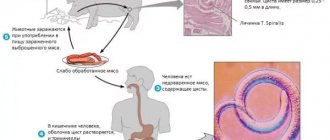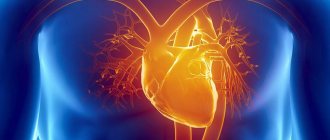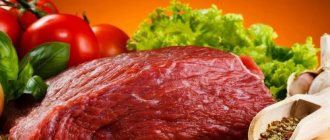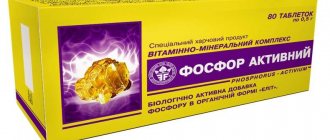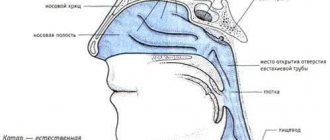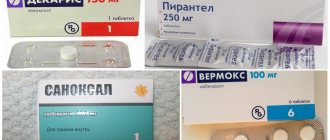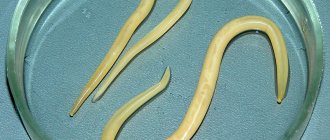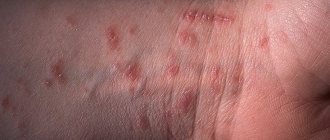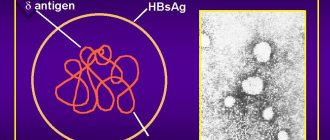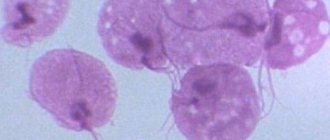How does bovine tapeworm develop?
The worm has four well-developed suckers and consists of segments. Hermaphroditic segments (proglotids) have well-developed male and female reproductive systems. Therefore, the eggs are fertilized inside one worm. The eggs are oval or spherical in shape with a diameter of 28-44 microns.
Inside the egg there is a six-hooked embryo - the oncosphere.
The only definitive host (an organism in which the worm can develop from an egg into a sexually mature individual) of the tapeworm is humans. The worm parasitizes the small intestine.
Pork tapeworm in humans
The causative agent of the parasitic disease is a parasitic tapeworm from the Taenia solium family. Pork tapeworm causes digestive upset and neurological disorders. The disease is dangerous due to cysticercosis of the eyes, brain, skin, lungs, and heart muscle. The pork tapeworm is large in size, its length can reach 4 m. There are 4 suckers on the head of the parasitic worm.
The helminth is a hermaphrodite. Each fertilized segment of the worm can contain 50 thousand eggs with embryos, or oncospheres. Adults parasitize the human digestive tract, excreting segments of the worm's body along with feces. The role of the intermediate host of the worm is played by a pig or wild boar. The main place of residence for the parasitic worm is the human intestine.
Infestation of pigs by worm larvae occurs when animals eat contaminated waste or drink contaminated water. Having penetrated the stomach of the intermediate host, the pork tapeworm is freed from its protective shell and spreads throughout the body through the bloodstream. The larvae of the parasitic worm mainly settle in the muscles. After 2-3 months, the embryos of the worm turn into peculiar vesicles with eggs - cysticerci. The latter remain viable for 4-6 years, after which they calcify and die.
When invasive meat is consumed in the human small intestine, the head of the worm is released from the vesicles, which is attached to the wall with the help of hooks and suction cups and begins to release body segments with eggs into the external environment. During invasion, the oral-fecal mechanism of transmission of the pathogen is realized. The route of infection of a person by worm larvae is food or water (by drinking contaminated water). The disease is common in areas with unfavorable sanitary conditions. Employees of meat processing plants and pig farms are at risk.
Symptoms
Infection with pork tapeworm is accompanied by various clinical manifestations. The symptomatic picture can be both pronounced and hidden. Signs of invasion appear 1.5-2 months after ingestion of the larvae of the parasitic worm. The extraintestinal form of taeniasis (cysticercosis) can lead to damage to the eyes, heart, lungs and other organs. Depending on the location of the pork tapeworm in the human body, the disease manifests itself:
For intestinal form:
- nausea, vomiting;
- weakness;
- indigestion;
- increased appetite;
- abdominal pain of varying intensity;
- anal itching;
- iron deficiency anemia;
- decreased immunity.
For extraintestinal form:
- cerebral hypertension, hydrocephalus, severe headaches, epileptic seizures (damage to the larvae of a parasitic brain worm);
- chronic inflammation of the eyes, blurred vision (infection of the retina, conjunctiva);
- heart rhythm disturbances (penetration of parasitic worm larvae into the myocardium);
- tumors on the surface of the skin (damage to epidermal structures by parasitic worm larvae).
If taeniasis is suspected, the patient is prescribed a stool test and perianal scraping. If segments of a parasitic worm are detected, the patient is advised to undergo a comprehensive examination. For this purpose, he is sent for ophthalmoscopy, lung X-ray, CT scan of the brain and other diagnostic procedures to identify damage to other organs. Antibodies to pork tapeworm are detected using serological methods:
- RNGA;
- ELISA;
- RSK;
- NRIF.
Treatment
Therapy for taeniasis is carried out in a hospital in compliance with specific conditions for preventing self-infection of the patient. Treatment of parasitic infestation involves the use of anthelmintic drugs (Praziquantel, Niclosamide), and a saline laxative. The patient is recommended to eat a diet. Upon completion of anthelmintic therapy, at least 4 control stool tests are performed with an interval of 30 days. In parallel with drug therapy, it is allowed to treat taeniosis using traditional methods:
- Pumpkin seeds. The product (300 g) is peeled from the white peel, leaving a green inner shell. Then the seeds are crushed and diluted with a small amount of honey and water until a creamy mass is formed. The mixture is consumed on an empty stomach in one dose. After half an hour they drink a laxative, and after 3 hours they do an enema.
- Troychatka Ivanchenko. The prepared mixture of wormwood, tansy flowers and cloves is ground in a coffee grinder. Take 1.75 g of the composition on an empty stomach with water. On the first day, the drug is taken only in the morning, on the second - in the morning and at lunch. A full course of treatment for pork tapeworm can begin no earlier than the third day.
In a situation where single segments of a parasitic worm are found in the brain and eyes of an infected person, surgical intervention is performed followed by etiotropic treatment. The intestinal form of taeniasis usually has a favorable prognosis. The outcome of the disease in relation to the life and health of the patient in case of damage to the brain and other vital organs depends on the massiveness of the invasion and the location of the pork tapeworm larvae.
| Drug treatment | ||||||
| A drug | Active substance | Dosage | pharmachologic effect | Indications | Contraindications | Side effects |
| Praziquantel | Praziquantel | Therapy for cestodoses – 10-25 mg/kg once. Dosage for cysticercosis – 50 mg/kg in three doses. The course lasts 1-4 days. | The drug causes paralysis of the muscle structures of the parasitic worm, which leads to the destruction of the tapeworm's protective shell. | Schistosomiasis, trematodiasis, cestodiasis, neurocysticercosis and cysticercosis. | Pregnancy, lactation, children under 4 years of age, ocular cysticercosis, liver pathologies, individual intolerance | Abdominal pain, diarrhea, sweating, headache, vomiting. |
| Niclosamide | Niclosamide | The daily dose for adults and children over 12 years of age is 2-3 g. For children 5-12 years of age – 1.5 g. Young patients under 5 years of age are prescribed 0.5-0.7 g of Niclosamide per day. The daily dose is taken in one dose. The average duration of treatment is 4 days. | The drug slows down the life processes of the pork tapeworm, causing the death of the parasitic worm. | Hymenolepiasis, teniarhynchosis, taeniasis, diphyllobothriasis. | Pathologies of the liver, kidneys, lactation, pregnancy, stomach ulcers, individual intolerance. | Stomach pain, diarrhea, nausea, vomiting, loss of appetite, dizziness, drowsiness. |
| Fenasal | Niclosamide | Treatment of taeniasis in adults is carried out by a single dose of 8-12 tablets (2-3 g each) of Fenasal. Dose for children 5-12 years old – 4-6 tablets of 1-1.5 g each. | The drug has a paralytic effect on the parasitic worm, as a result of which it completely loses the ability to attach to the intestinal wall. | Taeniarinhoz, hymenolepiasis, dwarf tapeworm, diphyllobothriasis. | Pregnancy, lactation, individual intolerance. | Nausea, abdominal pain, itching, urticaria. |
| Male Fern Extract | Phylixic acid, filmaron. | Orally on an empty stomach, 4-7 g per dose. The daily dose should be taken within 20-30 minutes. | The drug paralyzes the muscles of the pork tapeworm and promotes the exit of the worm from the body along with feces. | Tenidosis, hymenolepiasis, diphyllobothriasis, enterobiasis. | Circulatory failure, pathologies of the liver, kidneys, stomach ulcers, duodenal ulcers, acute gastrointestinal diseases, fever, anemia, exhaustion, pregnancy, children under 2 years of age. | Nausea, vomiting, dizziness, diarrhea, headache, convulsions, respiratory depression, optic atrophy, collapse, hepatitis. |
Routes of infection
When the tapeworm reaches a length of 5-7 meters, its segments located at the end begin to come off. After this, they crawl out through the anus with feces or on their own. 6-8 proglotids are released per day, each of which contains up to 175 thousand eggs. The eggs fall into the soil.
The intermediate host is cattle (bulls, cows, buffalos, yaks, reindeer). Cattle become infected by eggs on pastures. In the intestines of animals, the shells of the eggs dissolve, the oncospheres pass through the intestinal walls with the help of hooks and are carried throughout the body with the blood.
In most animals they settle in the connective tissue of the muscles, in reindeer - in the brain, where after 4-5 months they turn into fins (cysticerci).
Cysticerci are vesicles with a clear liquid, inside of which the head of a chain tapeworm with a neck is located. In the intermediate host they live for 8-9 months and die.
They enter the human body through consumption of insufficiently thermally processed cattle meat.
Once in the human body, cysticerci pass unharmed through the stomach into the duodenum. There the head is freed from the vesicle, attached with suction cups to the mucous membrane of the duodenum, and the body of the worm begins to grow from the neck.
The worm grows 7-10 cm per day. The release of mature segments begins 2-4 months after infection. The lifespan of the parasite reaches 20 years.
The bovine tapeworm, as a rule, parasitizes alone in the human intestine. Hence its second name – “solitaire”, which means “lonely” in French.
Pathogenetic mechanism
The bovine tapeworm enters the body of the final host (human) in the form of larvae, after which, under the influence of gastric and pancreatic juice, the head is released and the parasite attaches to the wall of the small intestine. After this, the growth of the helminth begins, which lasts about 3-4 months. During this time, the parasite's body is covered with segments that secrete strong toxins that cause allergic reactions and skin rashes. A person becomes lethargic, drowsy, signs of apathy syndrome appear, and performance decreases.
Mechanism of tapeworm development
Mature segments of the bovine tapeworm, filled with eggs, eventually tear off from the body of the worm and are excreted from the intestines along with fecal matter, causing digestive disorders and stool disorders. Over the entire life cycle, which can reach 10 years, the worm constantly grows, and its length increases from a few millimeters to 7-10 m.
Mature cock
What does the bovine tapeworm eat?
The food for the bovine tapeworm is blood and the vitamins, mineral salts, and glucose it contains, but the parasite receives most of the substances from food entering the intestines. This leads to the fact that no more than 15-20% of useful and nutritious elements are absorbed into the systemic bloodstream, which is manifested by skin problems, decreased immunity, loss of strength and other signs of deficiency of vital substances.
Tapeworm nutrition
It is for this reason that many experts consider complete fasting for 2-3 days to be the most effective method of treating teniarhynchosis: if the helminth does not receive nutrients, the ability to live is reduced to almost a minimum, and the individual dies.
Some believe that fasting will help remove the parasite from the body
Teniarinhoz
Adults are more often affected by this type of helminthiasis, and rural residents are infected more often than in cities. Among the sick, workers of livestock farms, meat processing plants, and housewives predominate, becoming infected in the process of preparing food from minced meat and raw meat.
Animals become infected by ingesting segments or oncospheres with grass, hay, or water. Bovine tapeworm eggs remain viable in the external environment for a long time. In hay at temperatures from 10 to 30ºС they live up to 21 days, in water - 33 days, in liquid manure - 70 days, on grass - more than 150 days.
Life cycle of tapeworm
The life cycle of pork tapeworm development has several stages:
- The creature matures the moment it is in the human body, at the same time it secretes a segment with eggs, which, along with feces, is excreted into the external environment.
- The maturation of tapeworm eggs occurs already in the soil. This requires appropriate conditions - air humidity and warmth, the external temperature should reach 15°C and above.
- The worm enters the body of livestock along with food.
- Once in the animal’s digestive system, the egg bursts and the oncosphere is released. The larvae penetrate the bloodstream and cling to the surface of muscle tissue.
- Within a month, the larva turns into a bubble in which the head of the parasite is visible. There is also a liquid inside the formation that supports the vital activity of the young tapeworm.
- If you eat the meat of such an animal with insufficient heat treatment, you will become infected with pork tapeworm.
- An infected person becomes a threat to others, since inside him there is a constant separation of eggs from mature individuals. They, in turn, increase in size each time.
To avoid this infection, it is necessary to take preventive measures, which include:
- timely vaccination of livestock;
- compliance with hygiene standards;
- refusal to consume low-quality or questionable meat products;
- careful processing of agricultural products.
Requires knowledge of the worm's life cycle pattern. These are eggs - larva - adult helminth. And we must not forget that carriers of the infection are not only pigs, but also other domestic animals, birds and insects.
Health effects
Deterioration in health is due to the following factors:
- the suckers and body of the bovine tapeworm damage the intestinal mucosa,
- the worm irritates the intestinal receptors and disrupts motility,
- suppresses the secretory function of the gastrointestinal tract,
- inflammation of the small intestine develops,
- the passage of the proglotid through the bauhinian valve causes pain similar to an attack of appendicitis,
- segments of the worm can penetrate into the appendix (appendicitis) and cause inflammation,
- it is possible to develop intestinal obstruction due to blockage of the intestine by a parasite,
- sometimes the parasite penetrates the biliary tract and pancreatic duct, causing their obstruction,
- the parasite intensively consumes nutrients and valuable microelements do not enter the human body,
- metabolic products secreted by the tapeworm have a depressing effect on the immune system and cause allergies,
- The segments constantly crawling out of the anus move across the skin and have a depressing effect on the patient’s psyche.
Symptoms of the disease
Clinical manifestations of the disease depend on the location and stage of tapeworm development.
Signs characteristic of taeniasis indicate the habitat of an adult:
- headaches, dizziness, insomnia, anxiety. Such conditions can cause a lack of micronutrients (vitamins, minerals). The parasite consumes nutrients, depriving the host, while its waste products poison the human body with toxins;
- dyspeptic symptoms from the digestive tract are associated with the movement of the helminth through the intestines;
- skin lesions are manifested by rashes, itching, deterioration of complexion;
- Nasal congestion is allergic in nature.
It should be noted that the course and prognosis of taeniosis is more favorable.
Signs of bovine tapeworm infection
Often, immediately after infection and until the parasite fully develops, the disease is asymptomatic. And only after the bovine tapeworm reaches sexual maturity and the release of its segments begins (after 2-4 months) does the patient begin to feel unwell.
Worm parasitism in the intestines is manifested by symptoms such as:
- general weakness,
- dizziness,
- nausea,
- vomit,
- diarrhea (diarrhea),
- cramping pain in the abdomen,
- feeling of stirring in the stomach.
With the further course of the disease, it is possible to develop
- cholecystitis,
- pancreatitis,
- anemia.
Features of treatment
To treat bovine tapeworm, antiparasitic drugs and various folk remedies are used. Due to the high toxicity of antiparasitic drugs, their use is permissible only after consultation with a doctor, who will select an effective drug and a safe dosage.
The use of folk remedies is advisable as an additional treatment. It is quite problematic to get rid of teniarinhoz only with their help. The following drugs are used to treat bovine tapeworm:
- Praziquantel;
- Fenasal;
- Dichloromal;
- Niclosamide;
- Trixalom.
Male fern extract (capsules), as well as pumpkin seeds, are often used during the treatment period as a herbal enhancer. These plant substances contain specific poisons that are absolutely harmless to the human body, but dangerous for many parasites, including the bovine tapeworm. A week before deworming, the infected person should begin eating a slag-free diet. You need to adhere to it during the treatment period.
In order for the diet to contribute to the rapid destruction of parasites, you need to avoid eating heavy foods, including fatty, fried, salty, smoked and sweet foods. Preference should be given to broths, low-fat soups, dishes made from buckwheat, rice, low-fat fish, and fermented milk products. It is advisable to drink tea, jelly or compote as drinks.
At the same time, you need to completely give up milk, carbonated drinks, apricots, grapes, raspberries, peaches, gooseberries, beets, garlic, cabbage, legumes, sorrel, coffee, chocolate, and alcoholic beverages. You need to eat small portions at least 5 times a day. Before deworming begins, it is necessary to perform a cleansing enema procedure.
Preventive diagnostics usually occur 3-4 months after treatment. Its purpose is to analyze the effectiveness of the drugs used. If necessary, another course of treatment may be prescribed.
Symptoms of infection in children
In children, teniarhynchosis is more severe than in adults.
The disease is accompanied
- weakness,
- increased fatigue,
- unstable stools (constipation gives way to diarrhea),
- flatulence,
- lack of appetite.
Intermittent cramping pain in different parts of the abdomen is often observed:
- near the navel,
- along the small intestine,
- in the epigastric region,
- in the projection of the duodenum, gall bladder,
- in the area of the appendix.
Children often exhibit asthenoneurotic symptoms:
- increased irritability,
- headache,
- sleep disorders,
- fainting.
The blood test in most patients is within normal limits.
What happens in the human body
In the lumen of the small intestine of the final host, the Finns begin to gradually develop into adult individuals of the bovine tapeworm. They attach to the intestinal walls, absorb all the nutrients from food entering the digestive tube, grow and reach a length that is approximately 2 - 2.5 times longer than the entire human intestine. Until a certain time, the symptoms of bovine tapeworm may be absent or nonspecific; a pronounced clinical picture develops when the helminth reaches a significant size. The presence of the following syndromes (set of symptoms) in raw meat lovers is suspicious for taeniahrynchiasis:
- Abdominal syndrome – abdominal pain of unclear localization and character. They may be associated with the development of inflammation in the intestinal mucosa damaged by the worm, a violation of its motor and secretory activity.
- Dyspeptic syndrome - nausea, bloating, increased salivation, diarrhea or constipation, up to intestinal obstruction.
- Dystrophic syndrome – a person’s weight loss, despite increased appetite, anemia in blood tests.
- Asthenovegetative state - general weakness, frequent headaches, irritability, short temper, insomnia. This occurs due to chronic poisoning by waste products of the bovine tapeworm, which accumulate in the human body.
In addition, a patient with teniahrynchiosis has increased sensitization to various allergens, which is manifested by a high level of eosinophils in a general blood test, as well as class E immunoglobulins, determined by special studies.
If bovine tapeworm has been living in the human body for a long time, the symptoms cannot go unnoticed, and there is a high risk of life-threatening complications.
For example:
- intussusception (obstruction);
- perforation (perforation) of the intestinal wall with the development of peritonitis;
- the occurrence of inflammatory processes of different localization depending on the place of penetration of the parasite: in the appendix, gall bladder, pancreas, lungs, liver;
- provoking convulsions and epileptic seizures when bovine tapeworm eggs enter the brain.
Diagnostics
The method of scatological analysis (stool analysis) for worm eggs, which is effective for most helminthiases, does not detect tapeworm eggs. This happens because the segments emerge from the anus and only secrete eggs from the outside.
Eggs can sometimes be discovered accidentally when segments inside the intestine rupture.
Therefore, a diagnostic sign is the identification of segments, which can be seen visually. In addition, the segments lay eggs on the skin folds of the anus, so anal scraping with a wooden spatula is used, as with enterobiasis.
The eggs of bovine tapeworms are distinguished from the eggs of other worms visually, by differences in structure.
Often the worm is detected during endoscopic examination.
How to get rid of tapeworm?
Treatment is carried out on an outpatient basis. Children under 3 years of age should be treated in a hospital.
The recommended drugs are niclosamide or praziquantel, which are taken once.
To increase the effectiveness of the medication, you must follow a number of rules:
- on the eve of treatment, take easily digestible food (broth, puree, jelly, kefir, ground meat),
- on the day of treatment, immediately before taking the drug, take 1-2 g of baking soda, grind niclosamide tablets into powder, stir in 1/3 glass of warm water and drink in the morning on an empty stomach or in the evening 2 hours after a light dinner of liquid, low-fat food,
- praziquantel is taken with food, without chewing, with a small amount of water (contraindicated in children under 4 years of age, pregnant and breastfeeding women).
When taking these drugs, partial or complete destruction of the helminth occurs.
Folk remedies
The toxicity of antiparasitic drugs is sometimes a reason to refuse to take them. The secrets of traditional medicine are adopted:
- Infuse two tablespoons of immortelle in a thermos and pour 0.5 liters of boiling water. After 12 hours, strain. Take 100 ml before meals 3-4 times a day;
- Eat a clove of garlic and drink a glass of carrot juice every day for a week;
- Pour two tablespoons of tansy with a glass of boiling water, leave for two hours, strain. Add milk and do an enema. Two days before it, do not eat meat;
- Chop four tablespoons of unripe walnuts and pour a glass of boiling water. Add a pinch of salt. After half an hour, strain. Drink during the day with a saline laxative;
- Peel the pumpkin seeds without touching the grayish skin. Eat in unlimited quantities until you feel disgusted. Do not eat or drink anything other than them. Two hours after the last use of the seeds, take a laxative;
- Pour a tablespoon of dried elecampane roots into 200 ml of boiling water. Let it brew. Every three hours, drink two tablespoons. Course – 4-5 days.
Important! When using tansy to make decoctions and infusions, strict adherence to dosages is necessary.
Getting rid of tapeworm using pumpkin seeds
If there are contraindications to the use of medications, you can use pumpkin seeds.
For treatment, seeds that are dried without heating should be used. Their activity is inferior to tablets, but the seeds do not have a toxic effect and do not cause side effects.
2 days before starting to take pumpkin seeds, the patient is given an enema daily, and on the evening before treatment, a saline laxative is given.
On the day of treatment, an enema is given on an empty stomach, regardless of the presence of stool.
There are two ways to treat with pumpkin seeds.
1 way.
- Raw and air-dried pumpkin seeds are peeled to remove their hard shells, leaving their green inner shell intact.
- For adults, 300 g of peeled seeds are ground in small portions in a mortar or mixer. After the last portion, the mortar is washed with 50-60 ml of water and poured into a plate with ground seeds. You can add 50-100 g of honey or jam and mix thoroughly.
- The resulting mixture should be taken on an empty stomach in small portions over an hour, while lying in bed.
- After 3 hours, the patient is given a laxative, then after half an hour an enema is given, regardless of the presence of stool.
- Eating is allowed after stool caused by an enema and laxative.
Children are prescribed pumpkin seeds at one time in the following doses:
- 3-4 years - 7 g,
- 5-7 years - 100 g,
- 8-10 years - 150 g,
- 11-15 years - 200-250 g.
Method 2.
- Unpeeled pumpkin seeds are ground together with the peel in a meat grinder, mortar or mixer, poured with double the volume of water and evaporated for 2 hours in a water bath over low heat, avoiding boiling.
- Strain the broth through cheesecloth and remove the oil film from its surface.
- The entire dose of the decoction should be taken on an empty stomach within 20-30 minutes.
- 2 hours after administration, drink a saline laxative.
The required number of seeds depends on the age:
- for adults - 500 g,
- for children 10 years old - 300 g,
- 5-7 years - 200 g,
- up to 5 years - 100-150 g.
After the course of treatment and the release of the bovine tapeworm, it is necessary to examine it and make sure that the head (solex) is present. This will indicate the radicality of the treatment.
Prevention
To prevent the diagnosis of bovine tapeworm, prevention is necessary:
- First of all, it is necessary to eat meat that has undergone sufficient heat treatment. Parasite eggs die at a temperature of -12 degrees or at a high temperature for 2 hours or more;
- it is necessary to buy meat, especially beef and veal, from trusted retail outlets;
- When purchasing, carefully inspect the meat for the presence of larvae. They are visible to the naked eye;
- people working in the meat processing industry must undergo medical examination several times;
- maintain personal hygiene. If there is a sick person in the family, then it is necessary to provide him with separate dishes. Bed linen should be ironed;
- For any manifestations of disease or discomfort, consult a doctor and undergo examination for the presence of helminths.
